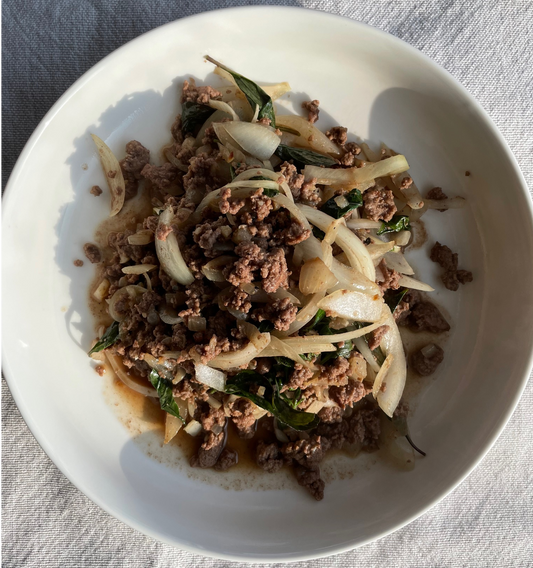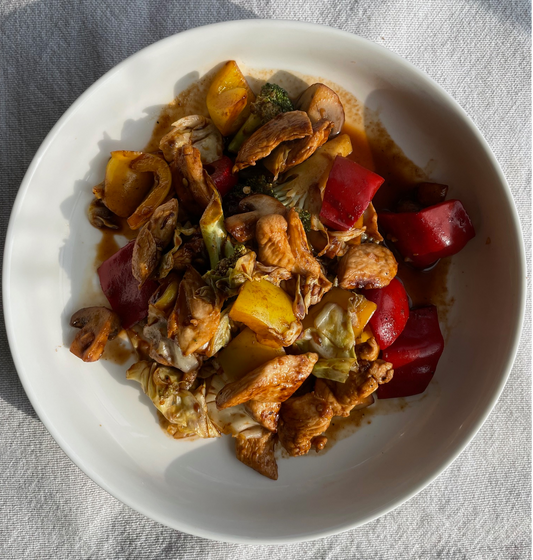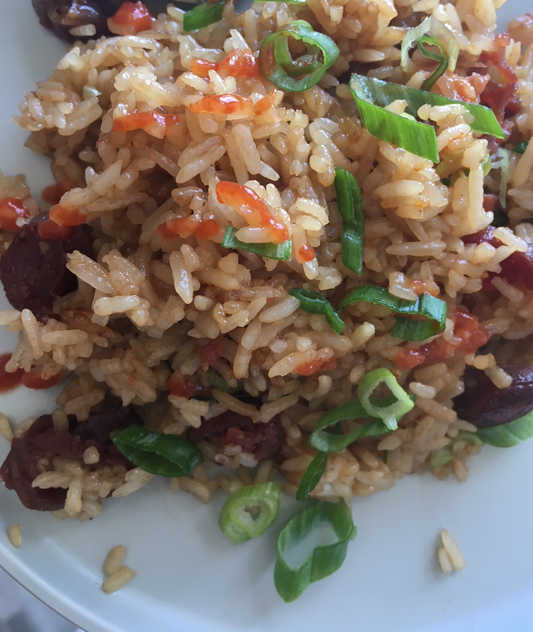Legend has it that thousands of years ago, a monster called Nian (year in Chinese) would attack local villages at the beginning of each lunar year. Not much could hold the beast off — all but loud noises, bright lights, and the color red failed. And so became the Chinese New Year festival: two weeks of vibrant, colorful, vivacious celebrations to keep that monster (and all the bad luck and evil it represented) out of harm’s way.
Today it’s an international treasure of a holiday, and a team favorite at Bowlcut. We love the rambunctiousness and camaraderie of it all — it’s like everyone everywhere collectively decides to put reality on pause, if not just for two weeks. Families gather, friends reunite, and everyone gets a load of damn good food. Here’s everything you need to come along for the celebrations.
What is Lunar New Year?
Only the best holiday of the year. Lunar New Year is the annual celebration of the arrival of spring and the beginning of a new zodiac year, according to the lunisolar calendar and its 12-sign cycle.
Lunar New Year originated nearly 3,500 years ago in ancient China — known orginally as Chinese New Year — and is the country’s single-most significant holiday. The entire Chinese public shuts down for seven full days of work-free festivities, though celebrations tend to last even longer. Since then, countries and cultures around the Eastern world (and in hybrid communities like Asian America) have adopted their own variations — appropriately dubbed Lunar New Year to include all who celebrate.
Year of the Rabbit
2023 is the year of the Water Rabbit, a sign that symbolizes longevity, peace, and prosperity. The Rabbit is regarded as the luckiest of the 12 zodiac signs. People born in 2023, 2011, 1999, and so forth in 12-year increments will be celebrating their Ben Ming Nian (or zodiac year) — which is not exactly all it’s chalked up to be.
In Chinese astrology, people in their zodiac year should actually be more careful, less risky, and strive for peace and prosperity over abundance and excess. The origins of most associated traditions and customs stem from this belief — ways to hopefully reverse-Uno the bad luck curse.
4 Lunar New Year traditions to follow
Wear something red.
Red is the luckiest color in Chinese culture, representing prosperity, loyalty, success, and happiness. It’s thought to help drive away bad luck and evil spirits who would wish you unwell. Red anything is fair game — accessories, socks, shoes, clothes, or (most popular) underwear. Don’t buy it yourself though! Superstition dictates that someone else has to buy your red for you.
Eat lots of good food.
Food is a centerpiece in everyday Chinese culture, and even more so during the New Year. Lucky foods are served on New Year’s Eve during the traditional family reunion dinner and throughout the 15-day festival. Elders, aunties, and uncles will shower you with good food, encouraging you to eat more, more, more — and who are we not to oblige?
- Dumplings — National staple and sign of familial unity and prosperity. Wrapping dumplings with loved ones is an essential festivity during the New Year celebration.
- Fish — The Chinese character for fish sounds similar to that of surplus, a symbol of abundance.
- Noodles — Long and seemingly endless, noodles represent happiness and longevity.
- Niangao — A glutinous rice cake dessert that sounds like year high in Chinese. Eat this if you’re hoping to make career or income gains this year!
- Tangyuan — Sweet rice balls in a warm soup, great for wishing familial togetherness.
- Oranges — The fruit of good fortune, fullness, and wealth.

Fill your house with lucky flowers.
Like everything else during Lunar New Year, décor reflects tradition and symbolism. Add some of our favorites to your household:
- Peonies — Represent wealth and prosperity. Historically, peonies were reserved for Chinese emperors because of its auspicious nature.
- Orchids — Represent fertility, purity, and abundance. A crowd favorite! It’s one of the four core flora of Chinese culture and an excellent host gift.
- Chinese money plant — Represent luck, fortune, and prosperity due to its leaves’ resemblance to coins.
- Jade plant — Represents wealth and prosperity, especially when gifted.
- Peach blossoms — Represents romance, prosperity, and growth. These always-pink blooms are sacred and lucky, particularly for our single friends. Not to be confused with cherry blossoms!
- Peace lily — Represents healing and cleansing, great energy for a new year.
By all means, don’t do these things.
- Avoid wearing white at all costs — it’s considered the color of death.
- No porridge, or more like poor-ridge, for breakfast.
- Don’t clean or sweep on New Year’s Day or else you’ll sweep your fortune away.
- Postpone laundry day and opt for second-day hair for the same reasons.
How we’re celebrating this year
Eat and wrap lots of dumplings, drizzled in loads of Chili Crisp.
Try these easy chive dumplings with a generous helping of Chili Crisp to top. We’re in the habit of regularly flipping to this recipe, but will take any excuse to make extras.
Send love to all our fellow AAPI-founded brands.
We’re lucky to be in community with an incredible peer class of Asian American and Pacific Islander founders — who’d happen to look really great among your Lunar New Year spread. Pick up Asian-inspired bevvies by Lunar, Nectar, and Makku; food stage by Inka World; coffee beans from Nguyen Coffee Supply.
Get involved in your local community.
A quick TikTok search for celebrations near you and you’re bound to come up fruitful. For our LA and NYC-based friends, we’ve got you covered! Keep tabs on our Instagram for the local scoop this week.





